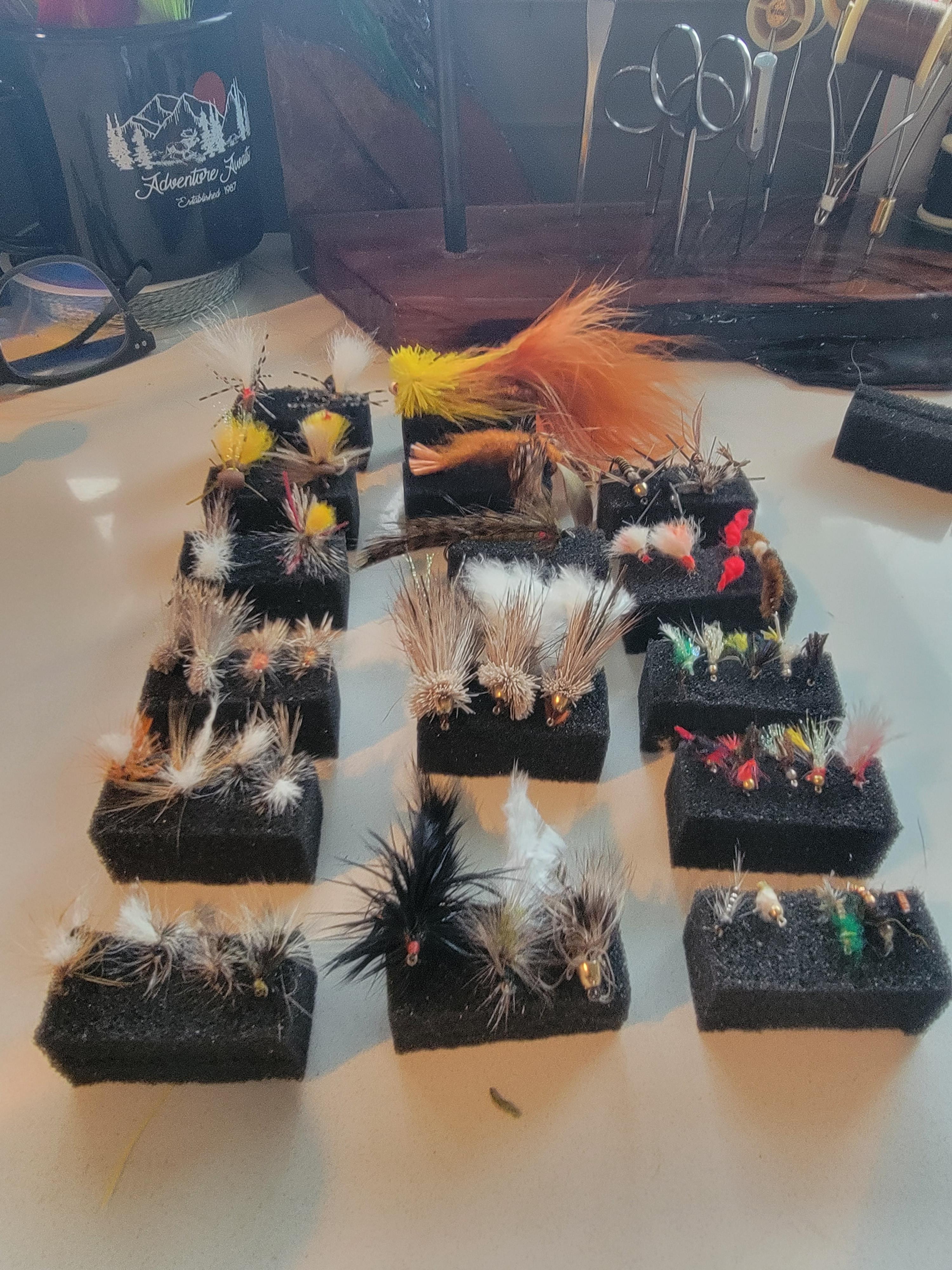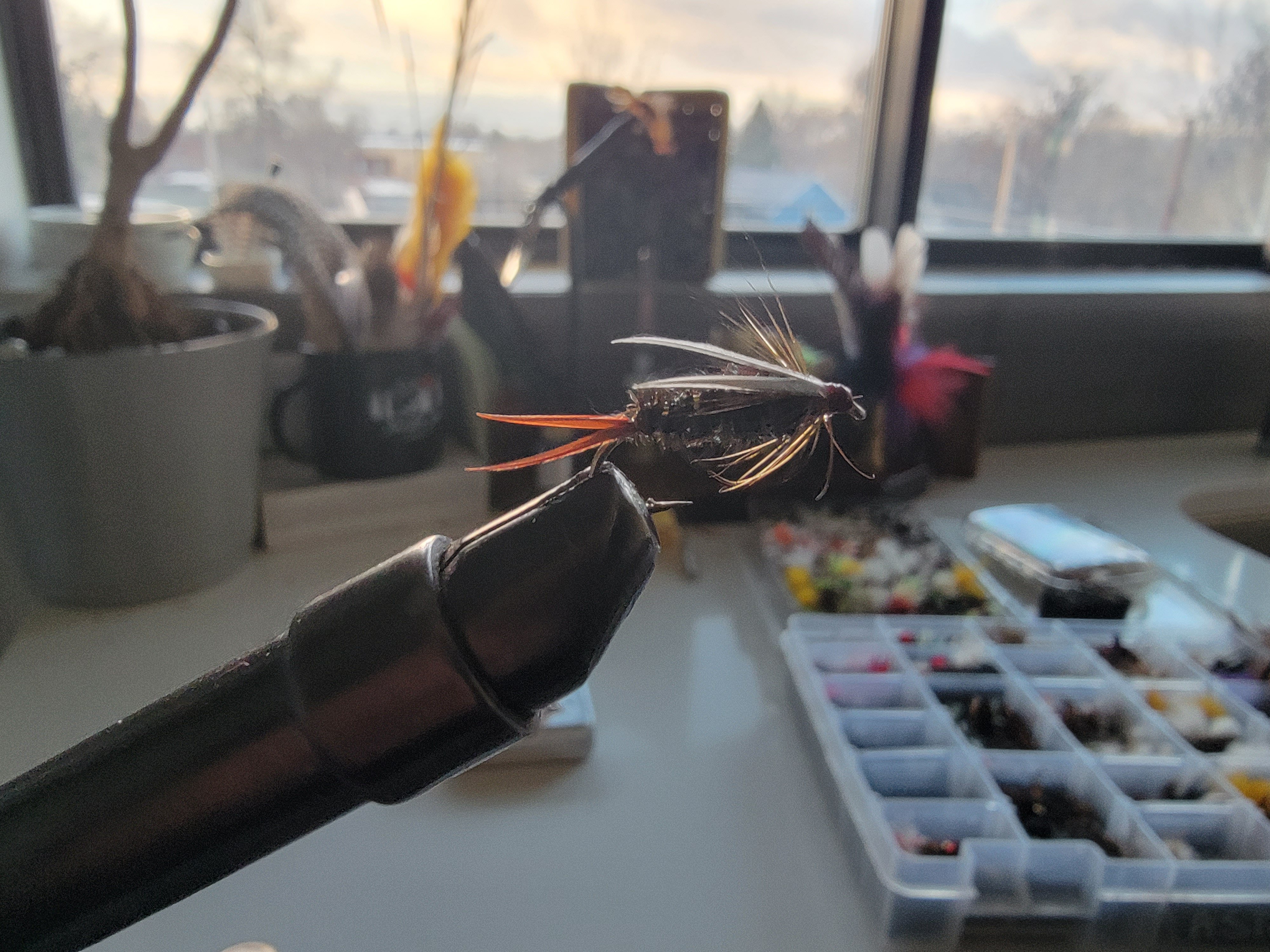Dive headfirst into the whimsical world of fly-fishing and uncover the secrets to designing the ultimate fly with the perfect feathers. Master the art of distinguishing between feather types and their distinct quirks, and handpick the ones that cater to your fishing whims. With the right feathers, you can concoct spellbinding patterns, textures, and hues that will lure even the most cunning fish. Brace yourself for the exhilaration of a triumphant fly-fishing adventure, armed with the perfect feathers for your flies.
Understanding Different Types of Feathers
Whether you're a seasoned fly-fishing pro or a bright-eyed beginner, picking the right feathers for your flies is nothing short of essential. The feathers you choose can make or break your fly's look and its aquatic acrobatics. So, let's unravel the feathered mysteries that await.
First up, we have the rockstars of the feather world: rooster hackle feathers. These bad boys boast long, stiff fibers that whip up a durable and dashing collar for your flies. Perfect for larger flies, they offer exceptional movement and buoyancy, making them a fan favorite.
Next in the lineup, we have the graceful hen hackle feathers. With their softer and more flexible fibers, these beauties are your go-to for smaller flies. They produce a smooth, lifelike dance in the water, ideal for those delicate presentations that require a touch of finesse.
Then, there's the versatile saddle hackle feathers, the jack-of-all-trades. They strike a balance between the rooster hackle's stiffness and the hen hackle's flexibility. Ideal for a range of fly sizes and patterns, these wider feathers provide ample coverage, especially for larger flies.
To craft a fly that not only catches fish but also catches eyes, it's vital to get your hackle feather game on point. Understanding the quirks and qualities of each type lets you choose the perfect hackle for your fly-fishing escapades.

Selecting Feathers Based on Fly Patterns
Let's dive into another crucial aspect of feather selection: the fly pattern you're aiming to recreate. Each fly pattern has its own personality and flair, demanding specific feather types and sizes to nail that perfect look and action in the water. Picture this: you're crafting a dry fly pattern that mimics an adult insect gracefully bobbing on the surface. For this, you'll want hackle feathers with long, stiff fibers that can buoy the fly and keep it afloat like a pro.
Now, flip the script. If you're working on a nymph or wet fly pattern that embodies a submerged insect or a tantalizing baitfish, softer and more flexible hackle fibers are your best bet. These will give your fly that extra oomph of lifelike motion underwater, making it irresistible to your finned friends. Tailoring your feather choice to match the specific fly pattern can seriously crank up its effectiveness and boost your odds of a stellar catch.
And hey, let's not forget about the fashion statement your fly is making. Some patterns demand a splash of color or a specific palette. This brings us to our next juicy topic: exploring the vibrant world of feather colors.

Examining Feather Quality and Texture
When selecting feathers for fly tying, it's essential to examine their quality and texture. High-quality feathers will have solid and intact barbs, which are the individual fibers that make up the feather. They should also be free from damage, such as broken or missing barbs, which can affect the overall appearance and performance of the fly.
The texture of the feathers is also important. Some feathers have smooth and shiny barbs, while others have rougher and more textured barbs. The texture can affect how the feather moves in the water and reflects light, which can be important for attracting fish.
Take the time to carefully inspect the feathers before purchasing or using them for fly tying. Look for feathers with strong and intact barbs and consider the texture best suits your fishing needs.

Exploring Color Variations in Feathers
Let's talk about the kaleidoscope of colors that can tip the scales in your fly-fishing favor. Fish have their own quirky color preferences, and matching your fly to their natural prey can be a game-changer. Feathers come in a dazzling array of hues, from subtle earth tones to eye-popping brights.
When you're on a feather color quest, think like a fish. If you're casting in a river teeming with brown trout, go for feathers in browns, tans, and olives—basically, channel your inner woodland creature. But if you're targeting rainbow trout in a lake, break out the bold reds, oranges, and chartreuses. It's like picking the perfect outfit for a first date—get it right, and sparks will fly.
Play around with different color combos and watch how the fish react. It's all about finding that magic mix that makes them bite.

Tips for Properly Storing Feathers
Proper storage is important to ensure the longevity and quality of your feathers. Feathers should be stored in a cool, dry, and dark environment to prevent damage from moisture, sunlight, and insects. Avoid exposing the feathers to excessive heat or humidity, which can cause them to become brittle and lose their natural properties.
One common method of storing feathers is placing them in airtight containers or bags with desiccants, such as silica gel packets, to absorb moisture. This helps maintain the feathers' integrity and prevent them from deteriorating.
Additionally, it's a good idea to label and organize your feathers by type, size, and color for easy access and identification. This can save you time and frustration when searching for the perfect feathers for your fly tying needs.
By following these tips for properly storing feathers, you can ensure that your feathers remain in optimal condition and ready for use whenever you need them.
.png?width=300&height=100&name=Copy%20of%20Rise%20Beyond%20Logo%2012.31.24%20(300%20x%20100%20px).png)
.png)

.png)
